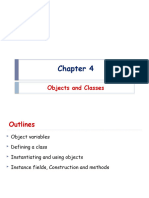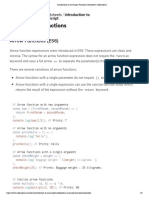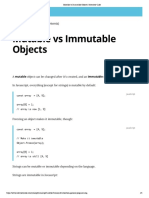0% found this document useful (0 votes)
62 views50 pagesChapter-3-Object and Class
Class and Object
- A class is a template or blueprint that defines common properties of objects. It contains fields, methods, constructors, etc. An object is an instance of a class that represents a real-world entity with state and behavior.
- An object's state is represented by fields/variables and its behavior by methods. The identity of an object is implemented using a unique ID.
- Objects are constructed using the new keyword followed by a class name. Constructors initialize an object and can set initial field values. Methods allow manipulation of an object's state. Fields store an object's state.
Uploaded by
Eden AdmasuCopyright
© © All Rights Reserved
We take content rights seriously. If you suspect this is your content, claim it here.
Available Formats
Download as PPTX, PDF, TXT or read online on Scribd
0% found this document useful (0 votes)
62 views50 pagesChapter-3-Object and Class
Class and Object
- A class is a template or blueprint that defines common properties of objects. It contains fields, methods, constructors, etc. An object is an instance of a class that represents a real-world entity with state and behavior.
- An object's state is represented by fields/variables and its behavior by methods. The identity of an object is implemented using a unique ID.
- Objects are constructed using the new keyword followed by a class name. Constructors initialize an object and can set initial field values. Methods allow manipulation of an object's state. Fields store an object's state.
Uploaded by
Eden AdmasuCopyright
© © All Rights Reserved
We take content rights seriously. If you suspect this is your content, claim it here.
Available Formats
Download as PPTX, PDF, TXT or read online on Scribd
/ 50




























































































